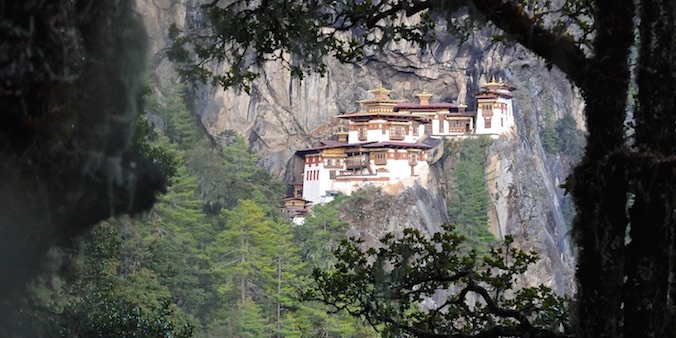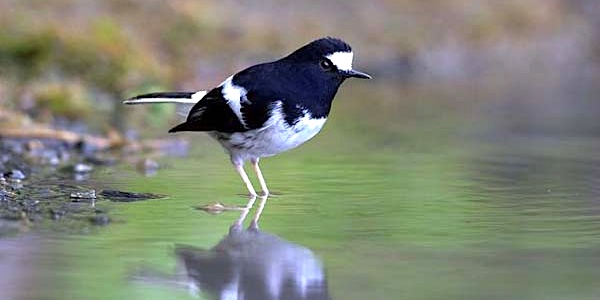Birds of West Bhutan
Tour - 10 days
About Bhutan
Bhutan is not your average destination. And that’s probably the understatement of the century. For starters, it’s the only remaining Buddhist Himalayan kingdom, having escaped assimilation by either China or India. Considering that Bhutan has just over 700,000 inhabitants and is merely the size of Switzerland, that’s quite a feat in itself.
Bhutan is mainly known for its very original culture and nature. This is largely due to the centuries of isolation, but also to the deliberate policies of the present government and of the kings in the past. Until the seventies, hardly any foreigner ever had set foot in the secluded kingdom.
Read more…Read less…
However, in 1972, at the occasion of the crowning of king Jigmed Singye Wangchuk, many foreign guests were invited to Bhutan. Having studied in the U.K., the future king obviously saw it coming that especially the western guests would observe a discrepancy between their own standard of living and that of the Bhutanese. In his opinion, the Bhutanese were not poor, but merely lacking in some amenities and products available in the West, most of them non-essential.
Otherwise, the Bhutanese were actually quite well off, he felt. With a beautiful, spacious farmhouse, more than enough forests, arable land and animals, they were fully self-sufficient in terms of heating, construction and nourishment. And, most importantly, they owned a culturally defined sense of identity, belonging and security that made most of them content and happy beings. The king had observed otherwise in the west.
In order to explain this to his foreign guests, he coined the term ‘gross national happiness,’ a clever term obviously meant to be juxtaposed with most governments’ aim: a high gross national product. The rest is history, one could say. These days, all over the world, conferences and workshops are being held on happiness and, more in general, on how to develop and emphasize those qualities of life that can not be measured in dollars or euros.
Bhutan does not claim that its inhabitants are the happiest in the world, but it does place overall happiness above wealth. These days, GNH, as it is generally referred to, is the formal pillar and yardstick of all government policies. After the king abdicated his powers in favor of a democratically elected government, Bhutan has seen four governments. All of them have continued to place GNH above anything else.
TEMPLES, DZONGS AND FORESTSAs a result, Bhutan has protected its culture – largely defined by Buddhist beliefs – but also its forests, mountains, rivers and wildlife much better than any other country in Asia. Key to all this is a reliable, non-corrupt government, which itself is one of the four pillars of GNH and, frankly, quite the exception in the region.
On your trip through Bhutan you will see numerous temples, monasteries and dzongs (monastery castles), better preserved and more lavishly decorated than anywhere else in the ‘Tibetan’ realm. Not less impressive, if alone because of their rustic beauty, are the many traditional houses, as well as meeting the friendly, warm-hearted people who embrace their culture as a precious heritage.
Bhutan is also extremely mountainous and rich in nature, especially forest – in fact, it is the most wooded country in Asia. The southern parts consist of hills and low mountains with dense jungle where elephants tigers and an incredible variety of birds live. Here, the people live in bamboo houses surrounded by rice fields. But in the central highlands, at an altitude of 1500 – 2500m, people live in small enclaves of farms reminiscent of Swiss chalets, surrounded by endless forests. Travelling through this area (or flying over it) you will occasionally catch a glimpse of the northern and highest parts, where the semi-nomadic yak shepherds live and which are bordered by glacier-covered Himalayan peaks. The only way to see all this up-close is to set out on a seven-day (or more) camping trek.
Region
Bhutan
Best Time
Oct-Nov
No. Of Days
10 days
Trip Character
Car-based
birding tour
Sleeping Altitude
1400 - 2900 m
Price
INR XXX/ $ XXX
ABOUT THIS TOUR
Bhutan is, relative to its limited size, one of the most bird-rich countries in the world. At least 700 species of birds have been observed in this country, the size of Switzerland.
To see most of these birds you don’t need to travel the length and breadth of Bhutan, just exploring West Bhutan is enough. This is the shortest of our birding trips in Bhutan, and, in order to maximize your birding time, it is compact in terms of driving time and the area covered. Even though you’ll be birding in the West of Bhutan only, you’ll be visiting a wide range of different habitats and their birdlife on this trip. You’ll see some pristine forests that range from subtropical evergreen to sub-treeline conifer forests, as well as even higher situated alpine meadows and valley riverine ecosystems.
Even though the focus of this tour is on birding, some time will be spent on sampling some of the most enigmatic temples and dzongs of West Bhutan. But this is largely up to you, as the program in this regard will be quite flexible.
YOUR custom-made TRIP
The tour described here, as well as the other ones on our website, are mainly meant as suggestions. We would be happy to offer you a travel proposal that fully meets your personal demands and expectations. That means that you choose where you want to go, what level of accommodation and type of transport you want and what activities you prefer.
Please let yourself be inspired by this and other trips on our website and then drop us a line (or call us) to explain your travel wishes. We will be happy to help you put together the perfect trip. You can reach us over e-mail, Messenger, Whatsapp or mobile phone.
EXTENSIONS & VARIATIONS
Apart from the tour as described here, you could consider the following add-ons and changes:
- Spend another night at Phobjikha, in order to see highland species.
- Spend a full day at Thimphu, to sample the many sights here and get to meet the Bhutanese.
- Extend the tour by 3 or 4 days, so you can reach the Yongkola Pass at Yongkola (from Bumthang), on of Bhutan’s most rewarding birding areas. See Birding in Eastern Bhutan.
ITINERARY
-
.fa-info {color: #1146a9;}.fa-info:hover {color: #387dff;}Day 1: Delhi / Kolkata ✈︎ Paro
On a clear day, the morning flight to Paro offers excellent views of the Himalayas, including Mt. Everest. After clearing customs you will be met by your guide and driven to your hotel for a brief rest. Then we'll visit the National museum, and if you like, Paro Dzong, a huge monastery-castle dominating the town. Then we’ll do our first birding excursion along the banks of the Paro River.Altitude 2350m. -
Day 2: Paro - Chele La - Thimphu
An early morning departure for our journey up through ancient pine and fir forests to Chele La Pass (3,890m), where there are fantastic views of the high Himalayan peaks such as Jhomolhari (7,219m). From here, we'll explore alpine meadows and dwarf rhododendron scrub above the treeline. Altitude 2350 → 3900 → 2250m. -
Day 3: Thimphu - Dochu La - Punakha
Again, we'll rise early to experience dawn break over Dochu La pass (3,116m). Here, we'll explore beautiful montane forests as well. Reaching Punakha, you can visit the magnificent dzong, or go straight for more birding along the river. Altitude 2250 → 3115 → 1300m. -
Day 4: Punakha – Tashithang – Punakha (1 h)
Today we’ll do birding in the beautiful forest of Tashithang, a short distance north of Punakha. Altitude 1300 → 1400 → 1300m. -
Day 5: Punakha - Phobjikha (3 h)
Traveling further east, we'll reach the beautiful, high valley of Phobjikha, known for its black-necked cranes. Altitude 1300 → 2900m. -
Day 6: At Phobjikha
Today you can see the cultural highlight of the valley, Gangte Gompa (monastery). On November 11 (2020 and 2021), the Black-necked Crane Festival will be held here. Altitude 2900m. -
Day 7: Phobjikha - Wangdu (3 h)
We descend back to Wangdue Phodrang (near Punakha), stopping at different birding sites than on the way up. Besides, the hotel grounds are home to hill prinia, common tailorbird, blue-throated flycatcher and rufous woodpecker. Altitude 2900 → 1275m. -
Day 8: Wangdu - Paro (4.5 h)
Returning to Paro, we’ll stop at the royal botanical park (below Dochu La) where we should be able to see such species as Darjeeling and rufous-bellied woodpeckers, grey-winged blackbird, Blanford’s rosefinch, kalij pheasant, yellow-browed and green-backed tits, grey-backed and long-tailed shrikes, and rusty-flanked treecreeper. Altitude 1275 → 2250m. -
Day 9: in Paro, walk to Tigersnest
Today you do the well-known hike to legendary Taktsang Goemba, better known as Tiger’s Nest. It is 2.5 h walking up and 1.5 h down, but the magical little temple is worth it. In reality, we’ll spend the whole day as we’ll meet a lot of birds along the trail as well. Altitude 2250 → 3120 → 2250m. -
Day 10: Paro ✈︎ Delhi / Kolkata (flight 2.5 h)
A morning flight takes you from Paro to Delhi (or Kolkata, Kathmandu, Bangkok), hopefully with wonderful views of the Himalayas. If you have asked us to arrange accommodation and transfers in Delhi you will be picked up from the airport by our driver.
HIGHLIGHTS OF THIS TOUR
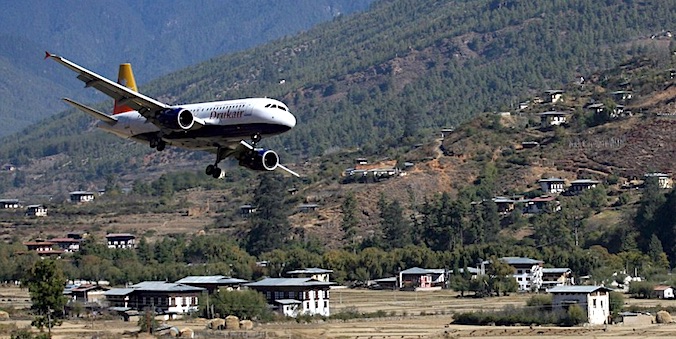
FLIGHT to PARO
Although the flight takes only one hour, on a clear day this no doubt is one of the most spectacular flights in Asia. After leaving the North-Indian plains and the heavily forested hills you’ll cross a number of ranges before flying over the actual glacier-clad Himalayas, the highest mountain range in the world. You’ll be amazed at the different landscapes you’ll see beneath you on the other side: bare, lightly coloured mountains, tiny rivers, small hamlets of Ladakhi farms surrounded by deep-green fields of barley, made possible by ingenious forms of irrigation.
Paro
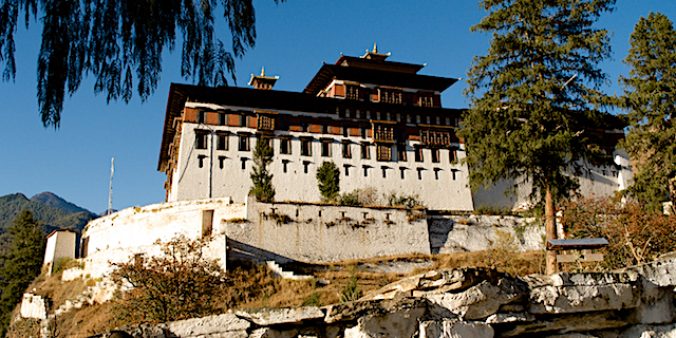
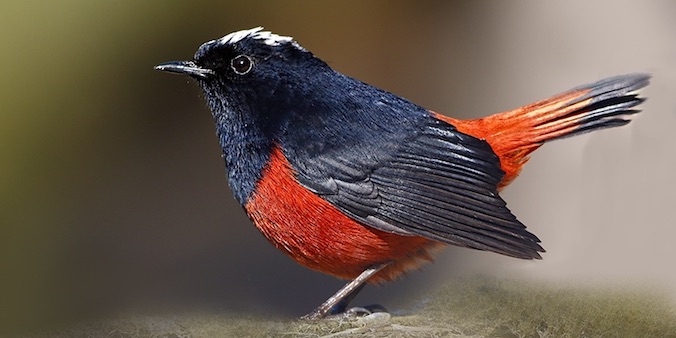
BIRDING near the PARO RIVER
BIRDS and VIEWS AT the Chele La
Bhutan’s highest motarable pass, the Chele La (3990m), is easily accessible from Paro The narrow road creeps up through magnificent forests of enormous cedars, spruces and larches, as well as tree-high rhododendrons (blooming in April-May). Once up, weather permitting, you will be treated to beautiful views of the Himalayas, especially Mt. Jhomolhari (7329 m) right on the Tibetan border. Chele La gives us also easy access to alpine meadows and dwarf rhododendron scrub above the tree line. Here, we may encounter the beautiful Himalayan monal, blood pheasant, Himalayan griffon, kalij pheasant, spotted, black-faced and chestnut-crowned laughing thrushes, white-collared blackbird, grey-backed shrike, blue-fronted redstart, snow pigeon, spotted nutcracker, orange-flanked bush robin, alpine accentors and the beautifully coloured white-browed rosefinch.
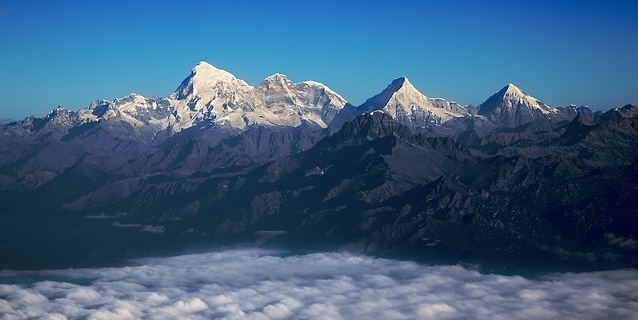
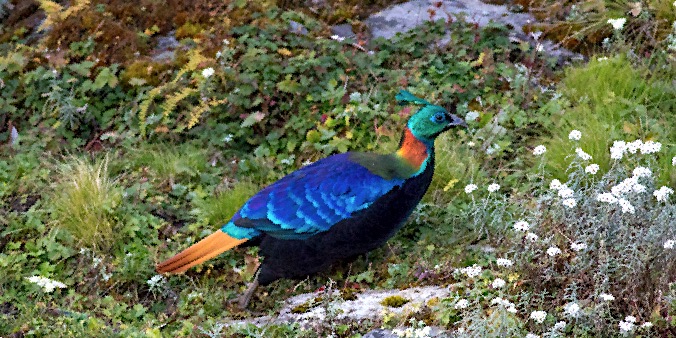
BIRDING on the CHELE LA
BIRDING near THIMPHU
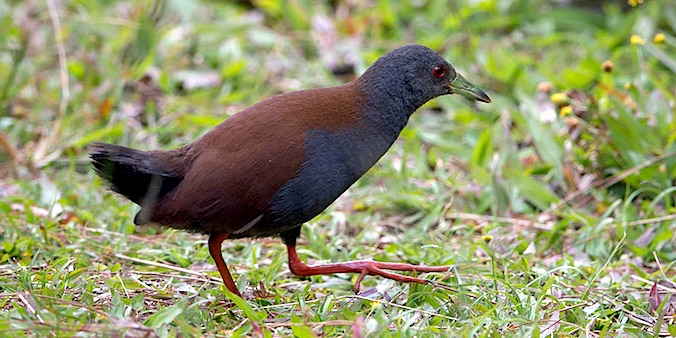
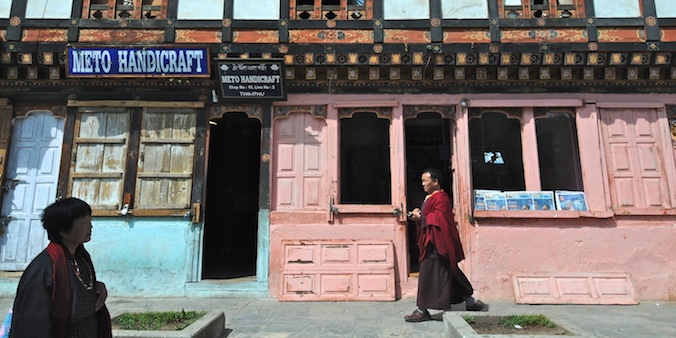
Thimphu
Sights of Thimphu
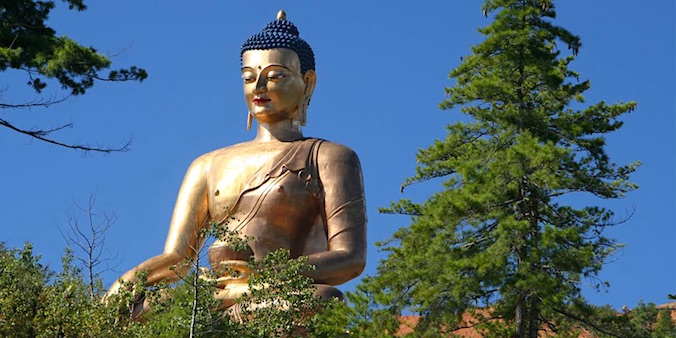
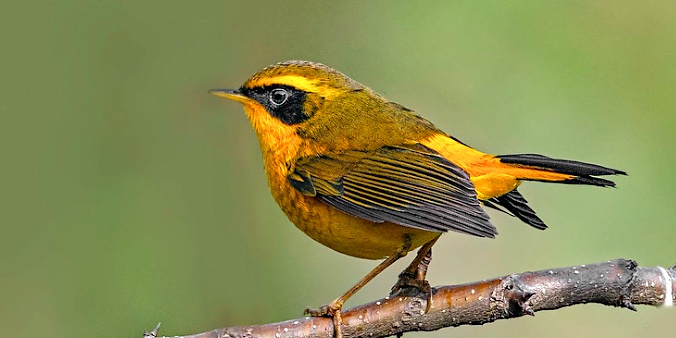
BIRDING near the DOCHU LA
The mixed conifer, oak and rododendron forests near the Dochu la (3116m) are a delight for bird lovers. At the higher elevations near the pass you can see green-tailed and mrs. Gould’s sunbirds, ultramarine flycatcher, black-faced laughingthrush and Hodgson’s redstart, while hill partridge forage in the forest undergrowth. The evergreen mixed semi-deciduous forests below the pass are easily accessible from the road. They are home to mountain hawk eagle, eurasian treecreeper, grey bush chat and golden bush robin, just to name a few.
Punakha Dzong
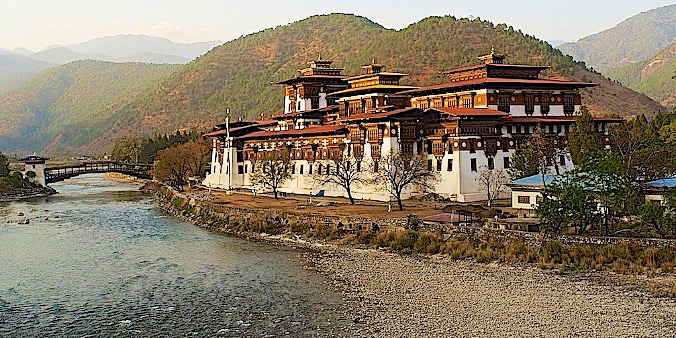
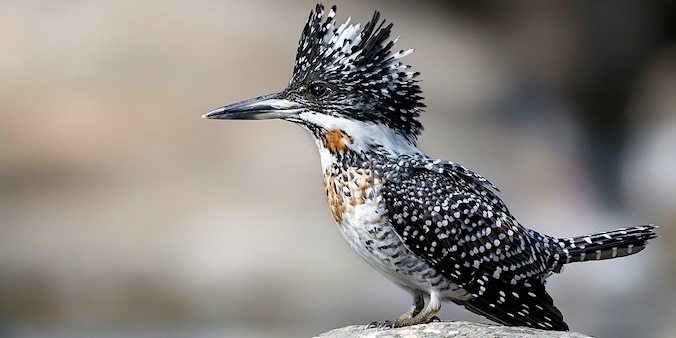
BIRDING at PUNAKHA
BIRDING at TASHITANG
Just a short drive north of Punakha some very beautiful, pristine forest can be found. These warm, broad-leaved forest, situated at an elevation of 1400m, are inside the 1730 km2 large Jigme Dorji Wangchuck National Park. They are home to river lapwing (near the river only), red-headed trogon, gray-headed woodpecker, greater yellownape, striated bulbul, the glowing small niltava, grey-bellied, slaty-bellied and chestnut-headed tesias, pygmy blue-flycatcher, pygmy and spotted wren babblers, Nepal fulvetta, slaty-backed and spotted forktails and the dazzling scarlet finch.
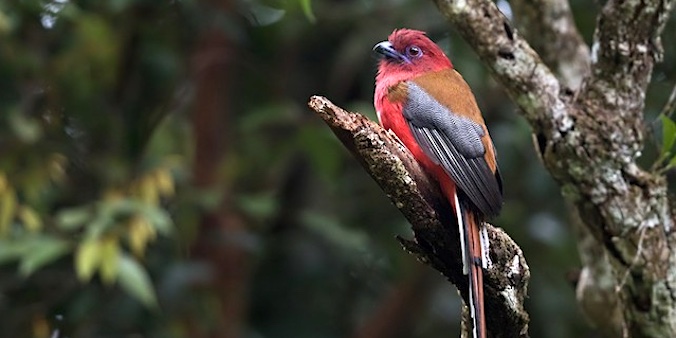
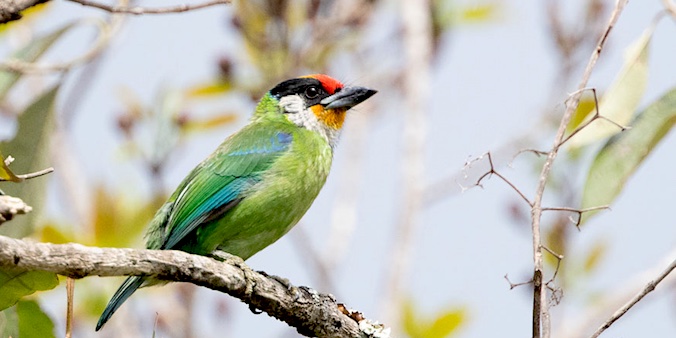
BIRDING between WANGDUE and PHOBJIKHA
Phobjikha
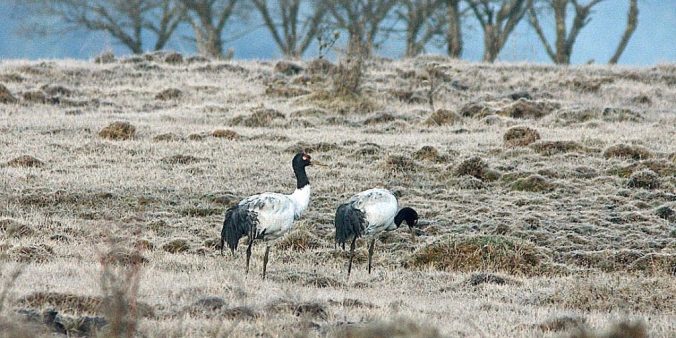
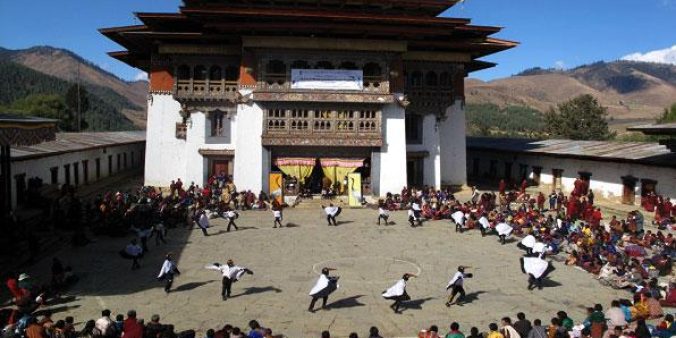
BLACK-NECKED CRANE FESTIVAL
Phobjikha is not only home to the cranes but also to around 500 farmers. Although known for their traditional respect for all sentient beings, these people wish for economic development. In order to combine these two elements, the Royal Society for the Protection of Birds, together with villagers, monks and local businessmen, developed the Black-necked Crane Festival as part of a Community based sustainable tourism program. The festival is basically a tsechhu, a religious festival like there are many all over Bhutan. These are happy social events, a riot of colour with quite spectacular dancing. People dress in their finest clothes and gather in the courtyards of de goemba (monastery) to watch religious dances performed by lamas in honour of Guru Rinpoche and his incredible deeds. In this case, new dances based on the theme of black-necked cranes specially have been added.
TakTsang Goemba (Tigersnest)
